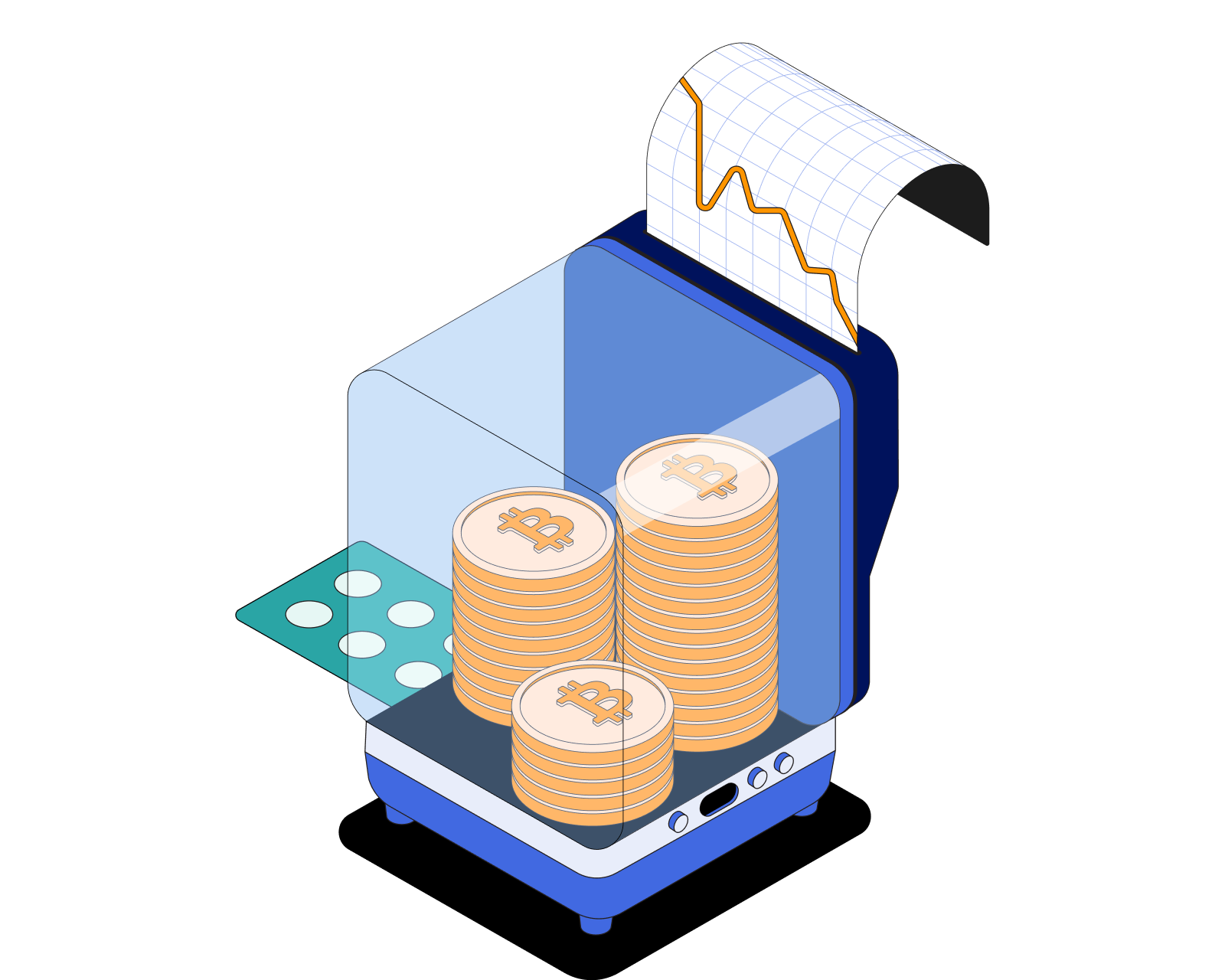What is Bitcoin Liquidity?

Table of Contents
- Bitcoin Liquidity: A Deep Dive into Market Depth and Stability
- What is Liquidity?
- Bitcoin Liquidity Explained
- Why is Bitcoin Liquidity Important?
- Factors Influencing Bitcoin Liquidity
- How Bitcoin Liquidity Impacts Trading
- Measuring Bitcoin Liquidity
- Bitcoin Liquidity and Market Volatility
- Bitcoin Liquidity and its Future
- Conclusion
Bitcoin Liquidity: A Deep Dive into Market Depth and Stability
Bitcoin liquidity is a critical factor in the Bitcoin market, indicating its health and stability. It measures how easily Bitcoin can be bought or sold without causing significant price changes. High liquidity is essential for efficient trading, minimizing risks, and fostering a robust market. This article explores Bitcoin liquidity, its importance, influencing factors, impact on trading, and its connection to the broader Bitcoin ecosystem.
Get started with a quick introduction to Bitcoin. Dive deeper into its fundamentals with What is Bitcoin?. Explore Bitcoin’s price trends and learn about its origins in The Bitcoin Revolution.
What is Liquidity?
Liquidity, in general finance, describes how easily an asset can be bought or sold without affecting its price. A highly liquid asset, like the US dollar, can be exchanged quickly and in large amounts without causing significant price changes. A less liquid asset, like real estate, takes more time and effort to buy or sell, and large transactions can significantly impact its price.
Bitcoin Liquidity Explained
Bitcoin liquidity specifically refers to how easily Bitcoin can be bought or sold without significantly impacting its price. High Bitcoin liquidity means large buy or sell orders can be absorbed with minimal price movement. Low liquidity, conversely, means even small trades can cause noticeable price swings, increasing risk and making trading less efficient.
Why is Bitcoin Liquidity Important?
-
Price Stability: High liquidity helps stabilize Bitcoin's price, reducing volatility. This is crucial for attracting long-term investors and fostering market confidence. Explore Bitcoin price predictions and key influencing factors, and understand what gives Bitcoin its value.
-
Efficient Trading: Liquidity makes it easier and faster to buy or sell Bitcoin at a fair market price. This efficiency is essential for active traders and those seeking to quickly enter or exit positions. Learn about Bitcoin exchanges and explore the different types, including centralized exchanges (CEXs) and decentralized exchanges (DEXs).
-
Reduced Slippage: Slippage, the difference between the expected price and the actual execution price of a trade, is minimized with high liquidity. This ensures traders get the price they expect and reduces unexpected costs.
-
Market Depth: High liquidity indicates a deep market, meaning there are many buyers and sellers at various price levels. This depth absorbs large orders without causing drastic price movements.
-
Accurate Price Discovery: Liquid markets facilitate accurate price discovery, reflecting the true market value of Bitcoin based on supply and demand.
-
Attracting Institutional Investors: Institutional investors prefer liquid markets, as it allows them to enter and exit large positions without significantly impacting the price. This institutional interest can further drive market growth and maturity. Explore the role of Bitcoin whales.
Factors Influencing Bitcoin Liquidity
Several factors influence Bitcoin liquidity:
-
Trading Volume: Higher trading volume generally indicates higher liquidity.
-
Number of Exchanges and Market Participants: A greater number of exchanges and active traders create a more competitive and liquid market.
-
Regulatory Environment: Clear and favorable regulations can boost investor confidence and participation, increasing liquidity. Conversely, restrictive regulations can hinder market activity. Understand Bitcoin governance.
-
Market Sentiment: Positive market sentiment can attract more buyers, increasing liquidity. Negative news or uncertainty can lead to selling pressure and reduced liquidity.
-
Whale Activity: Large Bitcoin holders ("whales") can influence liquidity through their trading activities. Their large orders can impact price, especially in less liquid markets.
-
Market Depth: A deep order book with many buy and sell orders at various price levels indicates high liquidity, allowing for larger trades without significant price impact.
-
Bid-Ask Spread: A smaller spread between the highest buy order (bid) and the lowest sell order (ask) suggests higher liquidity.
How Bitcoin Liquidity Impacts Trading
-
Execution Speed: High liquidity allows for faster trade execution, enabling traders to capitalize on market opportunities quickly.
-
Price Stability: Reduces price fluctuations caused by large trades, creating a more stable trading environment.
-
Lower Trading Costs: Minimizes slippage and fees, increasing overall trading profitability.
-
Arbitrage Opportunities: Price differences between exchanges are less likely in liquid markets, promoting price consistency across platforms.
Measuring Bitcoin Liquidity
While no single perfect measure exists, common indicators include:
- Trading Volume: Higher volume suggests higher liquidity.
- Bid-Ask Spread: A smaller spread indicates higher liquidity.
- Order Book Depth: A deep order book suggests high liquidity.
- Slippage: Lower slippage indicates higher liquidity.
Bitcoin Liquidity and Market Volatility
Liquidity and volatility are inversely related. High liquidity generally leads to lower volatility, while low liquidity can exacerbate price swings.
Bitcoin Liquidity and its Future
Bitcoin's liquidity has improved significantly over the years, but challenges and opportunities remain. Factors influencing its future include:
-
Institutional Adoption: Continued institutional investment could further boost liquidity. Learn more about Bitcoin as an asset class and Bitcoin corporate treasuries.
-
Regulatory Clarity: Clearer regulations could encourage greater participation and market depth.
-
Technological Advancements: Scaling solutions like the Lightning Network and Bitcoin layer-2 solutions could improve liquidity by enabling faster and cheaper transactions.
-
Decentralized Exchanges (DEXs): The growth of DEXs could impact liquidity by offering alternative trading venues and potentially increasing market decentralization.
Conclusion
Bitcoin liquidity is paramount for market stability, efficient trading, and the overall health of the Bitcoin ecosystem. By understanding its importance, influencing factors, and impact on trading, you can make more informed decisions in the Bitcoin market.
Learn more about Bitcoin and how to buy and sell it. Secure your assets by understanding Bitcoin wallets and learning how to create one. Explore self-custody and find out how to choose the right Bitcoin wallet.
Related guides
Start from here →
What is Bitcoin?
Get a straightforward introduction to Bitcoin and why it matters.
Read this article →
What is Bitcoin?
Get a straightforward introduction to Bitcoin and why it matters.

How does bitcoin exchange work?
How safe is it to store your crypto on centralized exchanges?
Read this article →
How does bitcoin exchange work?
How safe is it to store your crypto on centralized exchanges?

What is liquidity?
Liquidity has several slightly different but interrelated meanings. For the purposes of crypto, liquidity most often refers to financial liquidity and market liquidity.
Read this article →
What is liquidity?
Liquidity has several slightly different but interrelated meanings. For the purposes of crypto, liquidity most often refers to financial liquidity and market liquidity.

How does Bitcoin compare to other asset classes?
Find out how Bitcoin has performed as an asset class vs. others.
Read this article →
How does Bitcoin compare to other asset classes?
Find out how Bitcoin has performed as an asset class vs. others.

What is volatility?
Discover the role of volatility in crypto markets, how it’s measured, and more.
Read this article →
What is volatility?
Discover the role of volatility in crypto markets, how it’s measured, and more.

What is Bitcoin governance?
How does the network operate and decide on critical issues?
Read this article →
What is Bitcoin governance?
How does the network operate and decide on critical issues?
STAY AHEAD IN CRYPTO
Stay ahead in crypto with our weekly newsletter delivering the insights that matter most
Weekly crypto news, curated for you
Actionable insights and educational tips
Updates on products fueling economic freedom
No spam. Unsubscribe anytime.



Start investing safely with the Bitcoin.com Wallet
Over wallets created so far
Everything you need to buy, sell, trade, and invest your Bitcoin and cryptocurrency securely

© 2025 Saint Bitts LLC Bitcoin.com. All rights reserved


